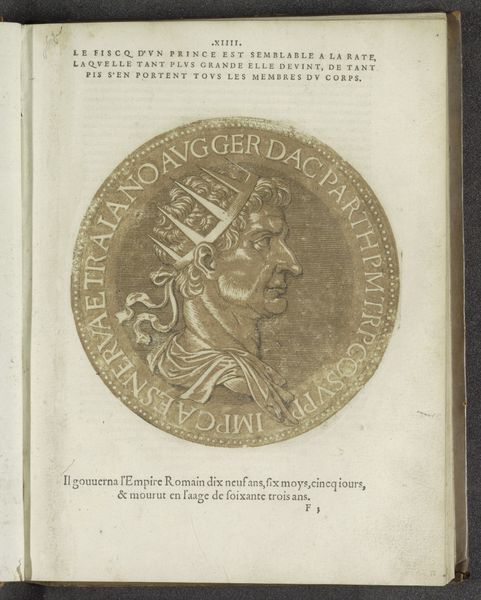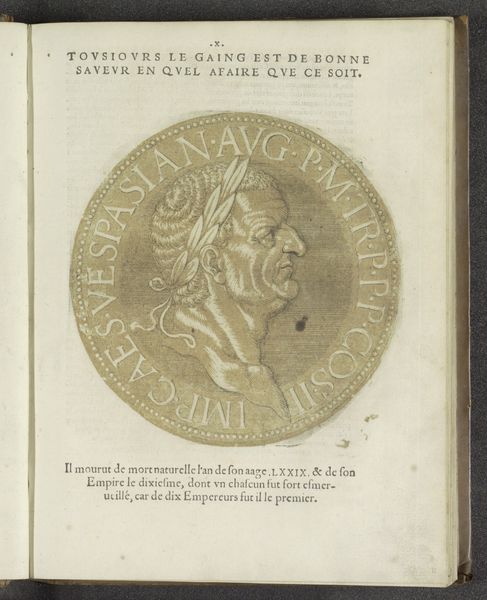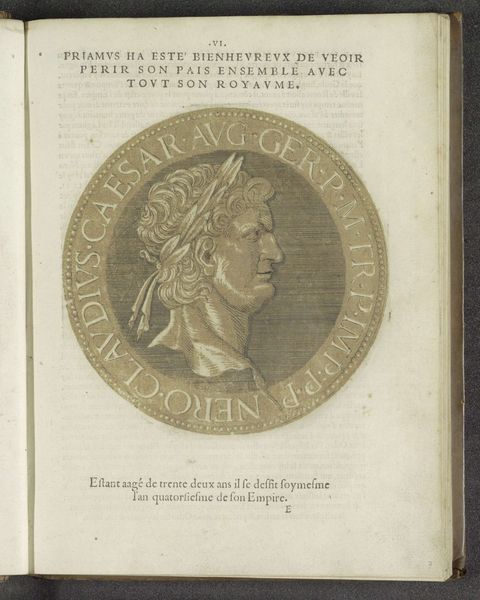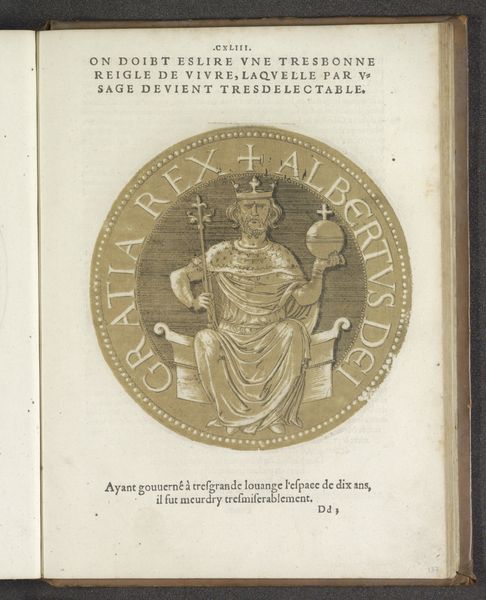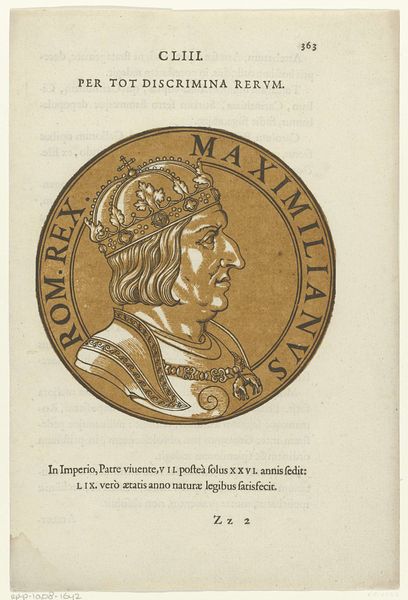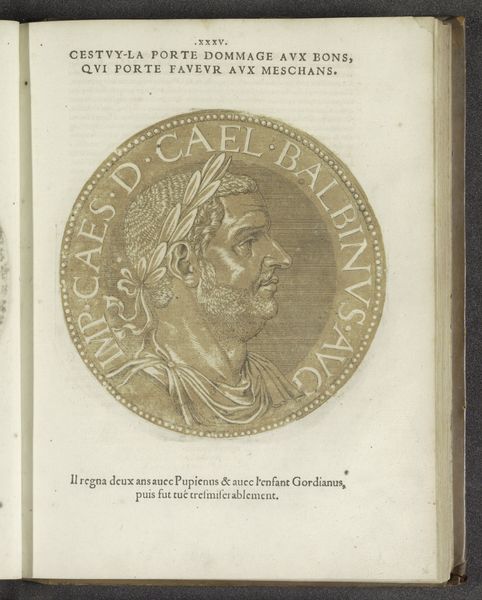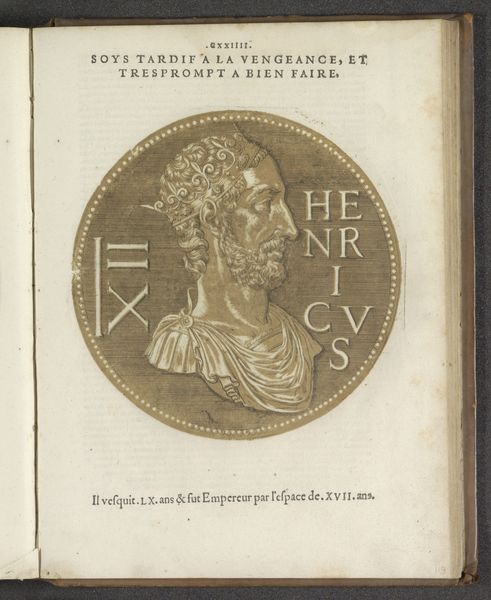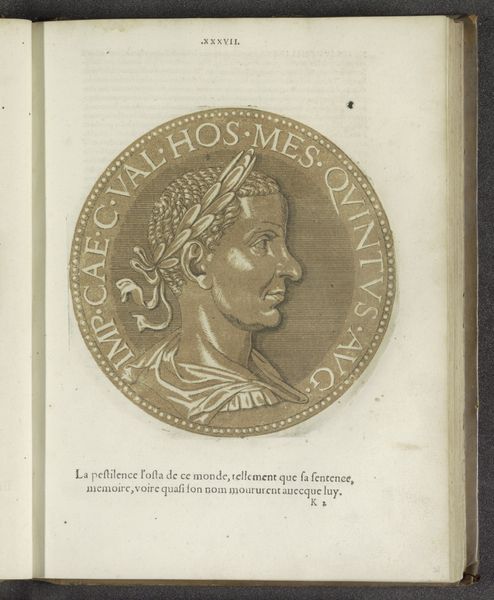
drawing, print, paper, engraving
#
portrait
#
drawing
#
medieval
# print
#
paper
#
11_renaissance
#
coloured pencil
#
history-painting
#
engraving
Dimensions: height 179 mm, width 178 mm
Copyright: Rijks Museum: Open Domain
Editor: Here we have a print from between 1557 and 1559 by Joos Gietleughen, titled "Portret van keizer Maximiliaan I," or "Portrait of Emperor Maximilian I." The engraving on paper presents Maximilian’s profile encircled by text. What do you notice about the use of imagery here? Curator: What strikes me immediately is how the artist chooses to represent power. Consider the coin-like presentation, with the emperor’s name emblazoned as if on currency. How does that echo earlier Roman practices? What meaning do you think is embedded in choosing a circular format? Editor: Well, coins signify wealth and authority, making the portrait itself seem valuable and enduring. The circle might represent wholeness or continuity of rule, kind of eternal power, perhaps? Curator: Precisely. The visual language speaks of legacies. Think about the language surrounding Maximillian at the time; this image projects and solidifies specific aspects of his reputation. Look at the details: his crown, his attire, even his very specific, strong profile, they are laden with symbolic intent, don't you agree? Editor: It’s almost like he's being presented as an ideal ruler through this carefully constructed image, every element contributing to a desired perception of his power. It’s really clever! Curator: Absolutely. This portrait reveals how symbols shape not only identity, but also history's perception. It makes you consider the staying power of such carefully crafted symbolism across time. Editor: I see how much intention and thought goes into representing leadership and how visual elements shape cultural memory. Thank you!
Comments
No comments
Be the first to comment and join the conversation on the ultimate creative platform.

